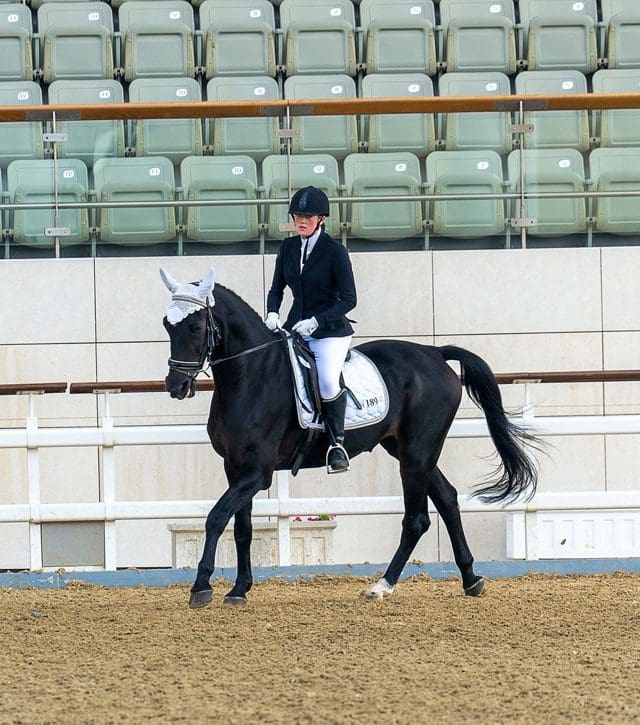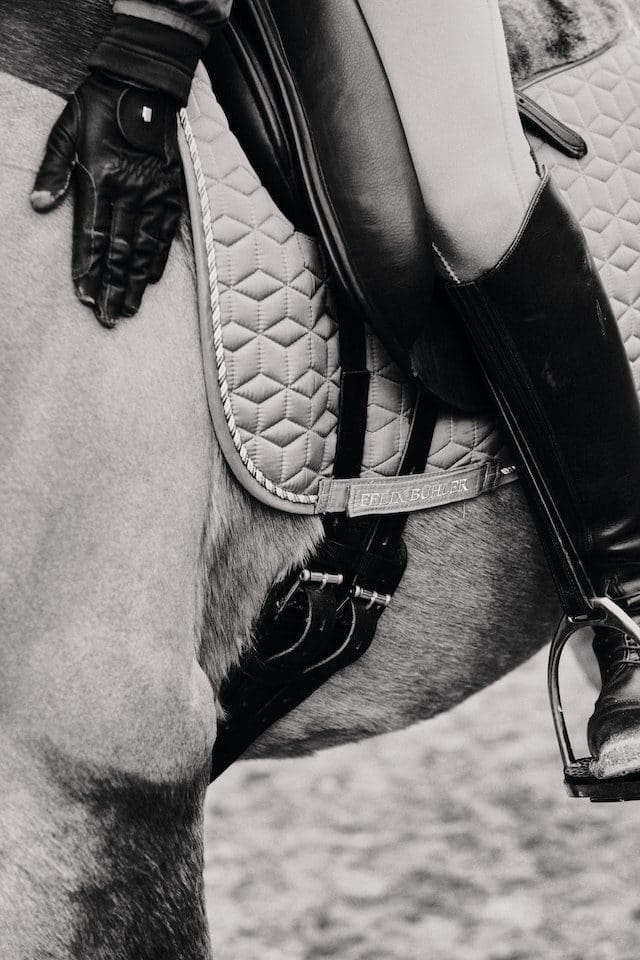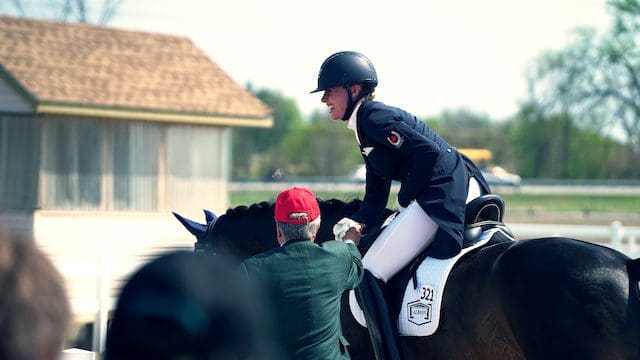**  USA Customers: Enjoy up to $800 Tax Free Imports - Even with Tariffs, we're still better value than US stores! **
USA Customers: Enjoy up to $800 Tax Free Imports - Even with Tariffs, we're still better value than US stores! **

Riders that are contemplating making the leap from advanced levels of dressage (level 4 in the US) to Prix St George, will need to understand the FEI rules for dressage, as they are responsible for equestrian dressage rules at Prix St George levels and above.
The basic rules of dressage are similar to British Dressage and USDF rules but we have highlighted some of the pertinent regulations below.
Any horse registered with the FEI competing in any National or International event may be subject to in-competition testing, so it is extremely important that you understand all the anti-doping rules and regulations. This goes for both humans and horses. The Equine Prohibited Substances list is published and revised by the FEI and can be found here.
Every competition has its own official dressage test, which is assembled and circulated by the FEI, it cannot be changed or modified and must be followed explicitly. All tests are published on the FEI website.
There is no time limit for dressage tests with the exception of freestyle tests which are timed. The time shown on the test sheets is for guidance only. All FEI dressage tests must be performed entirely from memory and all movements should be in the order stipulated on the test sheet.
Dressage tests start with the sound of the bell. A horse and rider must enter the Arena at point A within 45 seconds or they will be eliminated. In Freestyles tests after the bell, the rider must signal for the music to start within 45 seconds and enter the arena within 30 seconds of the music starting.
All tests start when the horse and rider enter the arena at A and end once the salute has been completed and the horse starts to move forward.

All riders must wear properly fastened protective headgear when mounted at all times. The updated FEI dressage top hat rule was changed in January 2021, when it outlawed the wearing of top hats at any stage of dressage competition. Protective headgear should be black or dark in colour. Rider breeches should be white or off-white. Jackets and Tailcoats must be of a single colour and approved by the riders’ National Federation. Stripes or multi-colours are not acceptable, but discreet piping or shades of the main colour are allowed on areas such as the collar as can include subtle crystal decorations.
Stocks or ties should be white or off-white. Gloves should be white, off-white, or matching the colour of the jacket or tailcoat. Riding boots must be black or a dark colour.
The use of spurs is compulsory and they must be manufactured from metal. The shank of the spur must be curved or straight and when worn, pointing backward from the middle of the spur. Spur arms should be smooth and blunt and this is the same if rowels are used (rowels must be free to rotate) There should be no sharp edges whatsoever. Dummy spurs that do not have a shank are allowed.
Saddles should be well fitting with long almost vertical flaps and English in style (dressage saddle) and be fitted with a girth and stirrups. Feet should not be enclosed by the stirrup in any way and are not allowed to be attached to the stirrup for example hooks or magnets (with the exception of FEI para dressage where magnetic stirrups are a standard compensating aid). Stirrups must have closed branches, but safety stirrups with open branches on the outside are allowed.

All saddle pads should be white or off-white. A contrasting colour piping around the saddle pad is allowed. Saddle covers cannot be used but pommel straps are acceptable.
A bridle must include a noseband and must be made entirely of leather or a leather-like substance (except buckles and padding). Padding is allowed in bridles, but only leather should be in direct contact with the horse. A browband is compulsory and must be made of leather with the exception of the parts that attach to the crownpiece or headpiece. Browbands may include decoration as long as they do not come into direct contact with the horse. Double bridles are compulsory for CDI3*, CDI4* and CDI5* competitions as well as world cup events.
Snaffle Bridoon and curb bits are acceptable subject to specific terms and conditions but must only have smooth surfaces. They must be made of metal, synthetic plastic, or flexible rubber.
All diameter measurements are taken next to the rings or cheeks of the mouthpiece.
When competing in the arena at any international event the carrying of any kind of whip is expressly forbidden. However, you are allowed to carry a dressage whip in the practice only, but it must be dropped before you enter the space around the competition arena. Dressage whips should not exceed a maximum of 1.20m (one hundred and 20 cm) or 1m (one hundred centimetres) in the case of pony competitions.
False Tails and Tail extensions are allowed but may not incorporate metal parts to add extra weight. Ear hoods are allowed and may include noise reduction and should be discreet in colour. The use of any substance to give the appearance of foaming at the mouth such as shaving cream or marshmallow fluff is strictly forbidden. Boots and Bandages are allowed in the practice arena but forbidden at any time whilst competing and must be completely removed before entering the competition space.
For CDI1* test horses must be a minimum of seven years old and for CDI2* tests and above horses, must be a minimum of eight years old. Horses at every level of dressage must have a height measured at the withers of at least one metre 48 centimetres (1.48m) without shoes.

The FEI objective is to treat Amateur professional riders the same, whilst taking into account conditions that apply exclusively to amateur riders. For instance, The FEI rules of dressage events apply to all international dressage events for Amateur riders and when judging amateur classes judges should use exactly the same principles as they would for judging any FEI competition.
An athlete may compete as an Amateur Rider from the age of 26 and all riders and horses must be registered with the FEI. Whilst any competition outside the horse’s country of residence, the horse must have a valid National or FEI passport, horses competing in amateur events in their own country do not need an FEI passport or recognition card, but must still be registered and identifiable.
For more detailed information visit FEI Rules for Dressage.